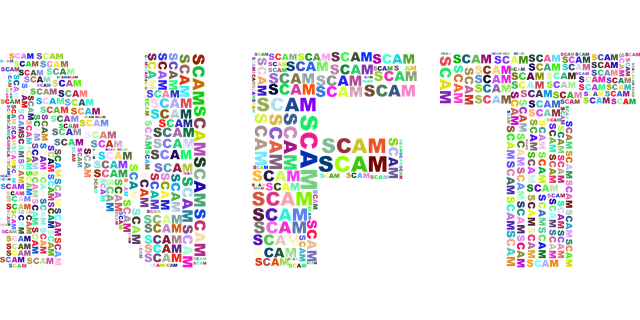The digitalisation era has introduced the blockchain technology and digital assets to the world, and NFTs (Non fungible tokens) have become an integral part of its ecosystem.
The ability to buy and sell digital art and other items in the form of NFTs reached its peak of popularity by late 2021. Yet so few questioned the issue of massive amounts of global emissions the mining operations of this technology have caused.
With the rising debates either NFTs are environmentally friendly or not, many began to criticise this industry and call upon its halt stating that it does not promise a sustainable future.
To better understand the essence of this harsh stance towards NFTs and determine if the condemnations are just, lets explore the subject and review the current challenges this technology faces.The basic concept of NFTs
Just like any other cryptocurrencies, NFTs are are also digital assets that can be bought, sold or exchanged on the market. Owner of these tokens is also registered on the blockchain. But the core difference of NFTs is that they are non fungible, i.e. one of a kind.
In the process of minting (creating), each NFT is provided with a unique identifier which makes it immutable.
- Minting is a mining process. Mining NFTs is mostly performed on the Ethereum blockchain network.

NFTs can represent digital art, collectibles, in game items, music, videos and even rights of ownership of an object.
At the time, the NFT marketplace and the industry in general found their attraction among the wide audience by providing a unique asset able to represent practically anything in a digital form.
The environmental impact
The biggest drawback of the NFT industry is its negative impact on the environment. The amount of electricity consumption involved in mining and carbon emissions it generates causes complex problems and substantially affects the climate change.
A research conducted by the Cambridge Centre for Alternative Finance has put in into simple terms by describing the blockchain platforms energy consumption in comparison to the real world:
- “Just as creating, selling and transporting a physical item consumes resources, so, too, do tokens created and transacted on the blockchain”.
Energy consumption
Needless to say how much energy has already been consumed by the proof of work mining consensus mechanism when the NFT market peaked in 2021.

Exponentially rising demand for electricity by various NFT platforms and the blockchain industry rapidly expanding in general, began to ring an alarm on governmental levels.
As the energy sources are limited and the old proof of work model now represented rather a malicious system draining power, Ethereum focused on an alternative development path.
On September 15 an absolutely new consensus mechanism was launched, the proof of stake model. Thanks to this nifty gateway now confirming any blockchain transaction or performing any mining operations with NFTs required somewhat 99.95% less energy consumption.
Carbon footprint
But what where the consequences before the NFT transactions became less consuming and energy demanding?
The total NFT lifecycle within the blockchain ecosystem was energy intensive from the moment an NFT was minted to the stage it was store.
The proof of work mechanism required powering mining operations at excessive levels as only fast computers with colossal outputs could handle the job. Huge amounts of energy chewed by the Ethereum machine led to extreme carbon dioxide emissions.
As per the Cambridge Blockchain Network Sustainability Index, total Ethereum’s electricity consumption in 2021 was 16.40 terawatt-hours (TWh) of power, an equivalent of driving 15.7 million miles in a Tesla Cybertruck or flying 33 times to the Moon and back.
While researchers continue to calculate the negative impact of such energy consumption, the proof of stake mechanism already displayed itself as a perfect solution, as minting and transferring NFTs used up just 3.83 TWh of power by the end of 2022 after changing the consensus algorithms.
Issues of ownership and intellectual property
Unfortunately the carbon footprint and the environmental impact are no the only issues the NFT industry has to face.

Despite being non fungible tokens unique in their nature they can still easily become victim of fraudulent and devious activities. Here are just a few of them worth the mention:
- Plagiarism and theft. Regardless of you having a tailored NFT or even a whole collection, there is always someone who can copy previews of your tokens and mint a separate 1:1 alike collection.Selling this collection would be the equivalent of theft as your hard work and spent resources as a digital artist are being drained by the increasing value of a plagiarised replica.
- Ambiguity of ownership. You own a set of NFTs from a limited collection which carry high value, yet these were not minted by you personally, just bought. The creator can easily manipulate its worth whereas you would have little control over your investment.On the other hand, owning a NFT of a digitalised physical object like an expensive car only gives you the ownership of that specific token, not the actual car itself. Which in its place can depreciate the value of the NFT if the car is wrecked or totalled.
Economic concerns
Alongside the existing challenges, as any other widely adopted cryptocurrency or a digital asset, NFTs are exposed to volatility, current conditions and speculations on the stock market.
Holding NFTs is not only a matter of understanding the market, its trends and turbulent states. Non fungible tokens require a proper perception of its concepts and trends adopted within the community to avoid facing undesired losses.
- Bubble risks. One of the most debated risks when buying and selling NFTs depends on the trends influential personas may impose.Any decision to purchase a specific NFT or a collection of NFTs must be evaluated based on your personal analysis. Consideration of a long or short term strategy must fully depend on your investment strategy, rather than on ones popular opinion.
- Volatility. By nature NFTs are highly volatile assets that depend not only on the current market conditions, but on what they represent.NFTs that provide rights to use intellectual property differ in cost from those that represent the art world. This core difference may affect the highs and lows of your asset when volatility takes another swing.
Ethical and social concerns
A slightly detached yet nonetheless important aspect of NFTs is the ethical side of owning, creating or selling such tokens.

Many address the matter of inappropriate price policies adopted by some participants of the market, while others base their decision on the exclusivity of their NFTs.
This fact alone raises the bar of inequality, unlike on the market of fungible cryptocurrencies where such speculations are not tolerated.
Potentially such conditions provide favourable opportunities to carry out fraudulent and illegal activities when the absence of proper regulation and policies empower scammers to exploit weaknesses within the industry.
Legal risks and complications
When purchasing NFTs, the copyright of the underlying asset or digital art, as you may also refer to it, does not automatically transfers to the owner of the NFT.
Transferability of NFTs and their IP rights are provided and managed through smart contracts. As well this can be arranged with a special agreement that suggests a set of rules of the proprietary rights of a NFT upon its creation or sale.
Granted by this system, NFT creators can protect themselves from copyright infringement. Unfortunately legal encounters take place. Such matters are settled through the Digital Millennium Copyright Act (DMCA) which serves as the Hall of Justice for such occurring matters.
Its vital that one must carry out his operations on the market with all due respect to orders and rules to avoid invading other NFT holders copyrights or losing his own.
Conclusion
The NFT industry and the technology of nun fungible tokens based on the ethereum blockchain technology has its share of positive aspects, as well as downsides.
Regardless of the controversial milestones the NFT market has surpassed it still remains a sustainable phenomenon that attracts millions of people around the world.
As the future of blockchain technology is far from being determined in its culminating stage, so do NFTs have a long path towards becoming a complete concept we may know in the near future.
The content provided here is for informational purposes only. It is not intended as personal investment advice and does not constitute a solicitation or invitation to engage in any financial transactions, investments, or related activities. Past performance is not a reliable indicator of future results.
The financial products offered by the Company are complex and come with a high risk of losing money rapidly due to leverage. These products may not be suitable for all investors. Before engaging, you should consider whether you understand how these leveraged products work and whether you can afford the high risk of losing your money.
The Company does not accept clients from the Restricted Jurisdictions as indicated in our website/ T&C. Some services or products may not be available in your jurisdiction.
The applicable legal entity and its respective products and services depend on the client’s country of residence and the entity with which the client has established a contractual relationship during registration.




